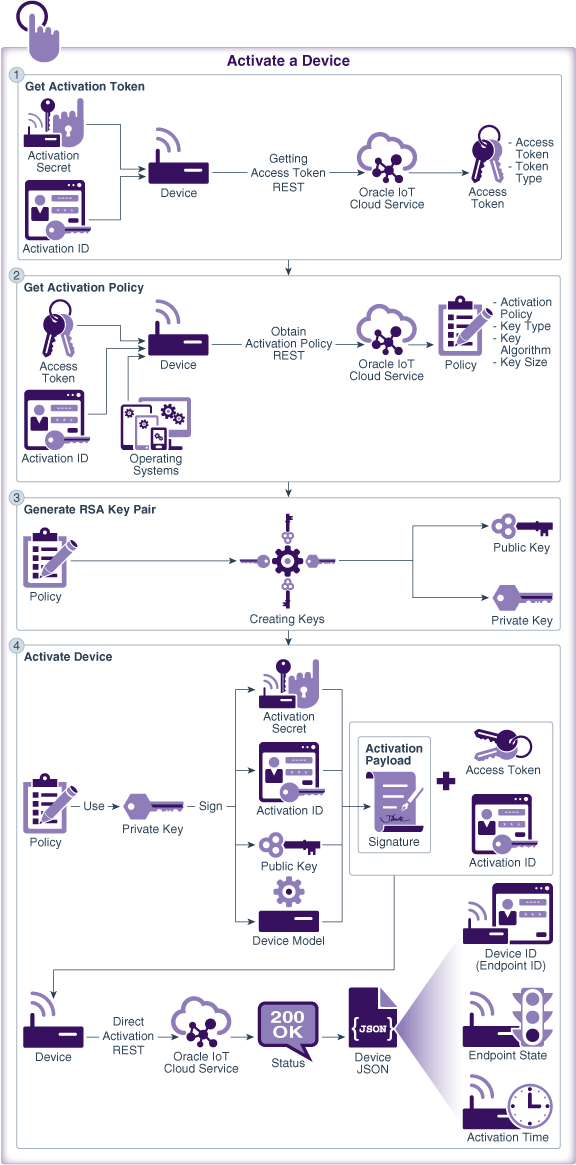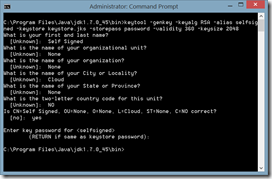In order to be able to create a digital signature, you need a private key. (Its corresponding public key will be needed in order to verify the authenticity of the signature.)
In some cases the key pair (private key and corresponding public key) are already available in files. In that case the program can import and use the private key for signing, as shown in Weaknesses and Alternatives.
In other cases the program needs to generate the key pair. A key pair is generated by using the KeyPairGenerator class.
How to Create SHA256 RSA Signature Using Java SHA256 with RSA signature is an efficient asymmetric encryption method used in many secure APIs. This algorithm first calculates a unique hash of the input data using SHA256 algorithm. Jun 18, 2014 In Java generating public private key using RSA algorithm is quite easy as it provides lib to do these tasks. In Java java.security package contains classes to do these operation. Generating public private key pairs. By using KeyPairGenerator class we can generate public/private key pairs as given below. Online RSA Key Generator. Key Size 1024 bit. 4096 bit Generate New Keys Async. RSA Encryption Test. Text to encrypt.
#!usr/bin/env bash: openssl genrsa -out privatekey.pem 4096: openssl rsa -pubout -in privatekey.pem -out publickey.pem # convert private key to pkcs8 format in order to import it from Java. Jan 24, 2017 Java provides classes for the generation of RSA public and private key pairs with the package java.security. You can use RSA keys pairs in public key cryptography. Public key cryptography uses a pair of keys for encryption.

In this example you will generate a public/private key pair for the Digital Signature Algorithm (DSA). You will generate keys with a 1024-bit length.
Generating a key pair requires several steps:
Create a Key Pair Generator
- Some situations require strong random values, such as when creating high-value and long-lived secrets like RSA public and private keys. To help guide applications in selecting a suitable strong SecureRandom implementation, starting from JDK 8 Java distributions include a list of known strong SecureRandom implementations in the securerandom.strongAlgorithms property of the java.security.
- May 15, 2009 Public key cryptography is a well-known concept, but for some reason the JCE (Java Cryptography Extensions documentation doesn’t at all make it clear how to interoperate with common public key formats such as those produced by openssl. If you try to do a search on the web for RSA public key cryptography work in Java, you quickly find a lot of people asking questions and not a lot of people.
The first step is to get a key-pair generator object for generating keys for the DSA signature algorithm.
As with all engine classes, the way to get a KeyPairGenerator object for a particular type of algorithm is to call the getInstance static factory method on the KeyPairGenerator class. This method has two forms, both of which hava a String algorithm first argument; one form also has a String provider second argument.
A caller may thus optionally specify the name of a provider, which will guarantee that the implementation of the algorithm requested is from the named provider. The sample code of this lesson always specifies the default SUN provider built into the JDK.
Put the following statement after the
line in the file created in the previous step, Prepare Initial Program Structure:
Initialize the Key Pair Generator The sims 4 serial key generator password txt.
The next step is to initialize the key pair generator. All key pair generators share the concepts of a keysize and a source of randomness. The KeyPairGenerator class has an initialize method that takes these two types of arguments.

The keysize for a DSA key generator is the key length (in bits), which you will set to 1024.
The source of randomness must be an instance of the SecureRandom class that provides a cryptographically strong random number generator (RNG). For more information about SecureRandom, see the SecureRandom API Specification and the Java Cryptography Architecture Reference Guide .
The following example requests an instance of SecureRandom that uses the SHA1PRNG algorithm, as provided by the built-in SUN provider. The example then passes this SecureRandom instance to the key-pair generator initialization method.
Generate Rsa Private Key Java Login
Some situations require strong random values, such as when creating high-value and long-lived secrets like RSA public and private keys. To help guide applications in selecting a suitable strong SecureRandom implementation, starting from JDK 8 Java distributions include a list of known strong SecureRandom implementations in the securerandom.strongAlgorithms property of the java.security.Security class. When you are creating such data, you should consider using SecureRandom.getInstanceStrong(), as it obtains an instance of the known strong algorithms.
Generate the Pair of Keys
Generate Rsa Private Key Java Pdf
The final step is to generate the key pair and to store the keys in PrivateKey and PublicKey objects.